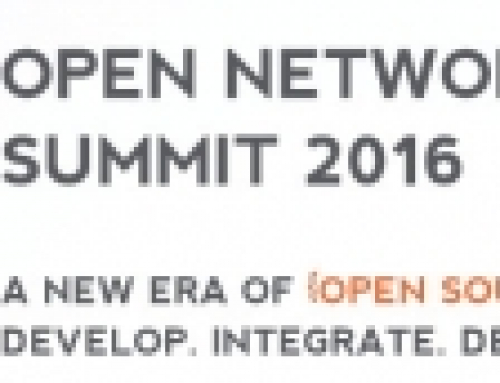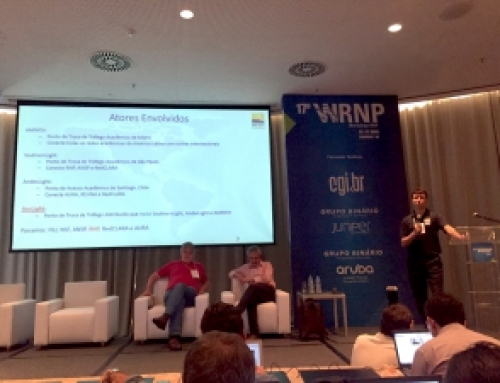Salt Lake City, Utah, November 15, 2016
During the Super Computing 2016, network engineers from AmLight, Academic Network of São Paulo (ANSP), State University of São Paulo (UNESP), Florida LambdaRail and California Institute of Technology leveraged the AmLight-ExP network to demonstrate the new 200G capacity between South America and the U.S. A total of 176Gbps of aggregated traffic was measured between, São Paulo, Miami and Salt Lake City, Utah, where the Super Computing 2016 was hosted. The figure below shows a sustained flow rate of ~85Gbps, with peaks of 97Gbps, generated using the FDT software. For this demonstration, two high-end servers were installed in São Paulo (one at São Paulo Research and Analysis Center (SPRACE)/UNESP and one at ANSP) and one server was installed at AMPATH/NAP of the Americas, Miami, FL. At the SC16, Caltech provided a few 100G servers.
“We are now the only academic institution in Latin America capable of transferring data at 100 Gbps from/to the United States, through a DWDM infrastructure that includes two 100G channels from the UNESP Center for Scientific Computing to the headquarter of the Academic Network at São Paulo (ANSP), thus enabling us to improve the data transfer rate between our CMS Tier-2 and the remaining sites of the Worldwide LHC Computing Grid by one order of magnitude”, said Sergio Novaes, PI of SPRACE and scientific director of UNESP Center for Scientific Computing.
In parallel with the high-performance network demonstration, Dr. Julio Ibarra, PI and Co-Founder of the Florida International University (FIU) Center for Internet Augmented Research and Assessment (CIARA), where these projects are based in the U.S., presented to the SC16 attendees the AmLight-ExP project titled “Creating new opportunities for US and Latin America research and education collaboration through the development of an intercontinental 100G optical network infrastructure”. The AmLight Express and Protect (ExP) project implements a hybrid network strategy that combines optical spectrum (Express) and leased capacity (Protect) that builds a reliable, leading-edge diverse network infrastructure for research and education (NSF Award#ACI-1451018).
sc16_amlight_demo
Figure 1 Demonstrated traffic in the Atlantic 100Gbps link
“Much recognition needs to go to the network engineers and the researchers who worked tirelessly before and during SC16 to configure and tune the network devices and servers to achieve these unprecedented results. I would like to congratulate our collaborators at UNESP, ANSP, Florida LambdaRail, and Caltech on this achievement, and the National Science Foundation for their support”, said Dr. Julio Ibarra, PI of the AmLight-ExP project.
“We have only been able to achieve this unprecedented result due to the efforts of a remarkable team of system and network engineers and the support of partners such as ANSP, AMPATH, Caltech, and companies such as Huawei, Intel and Padtec among others. The partnerships aimed at generating innovative R&D projects that UNESP CSC has established with high-tech companies were essential to achieve this result. But we intend to go further: new experiments involving 100Gbps international channels and software-controlled network resources are already being planned”, said Dr. Rogerio Iope, member of SPRACE engineering team and executive manager of UNSEP Center for Scientific Computing.
For full press release click here.


